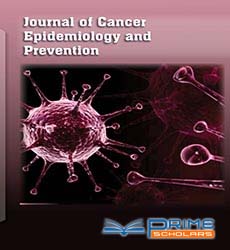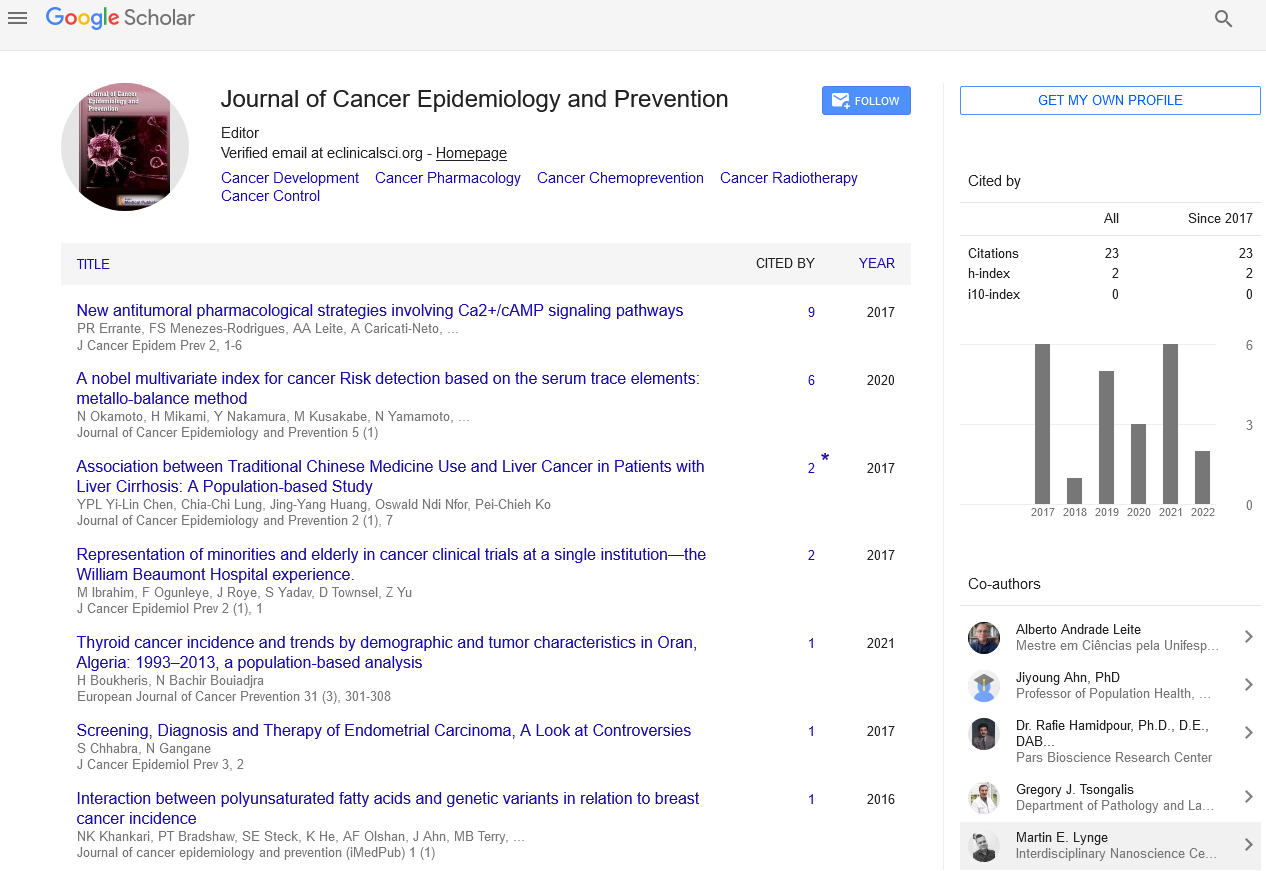Commentary - (2023) Volume 8, Issue 1
Anti-Inflammatory Properties and Potential for Chemotherapy and Treatment of Cancer
Hao Wu*
Department of Radio Oncology, Wuhan University, China
*Correspondence:
Hao Wu,
Department of Radio Oncology, Wuhan University,
China,
Email:
Received: 31-Jan-2023, Manuscript No. IPJCEP-23-15868;
Editor assigned: 02-Feb-2023, Pre QC No. IPJCEP-23-15868 (PQ);
Reviewed: 16-Feb-2023, QC No. IPJCEP-23-15868;
Revised: 21-Feb-2023, Manuscript No. IPJCEP-23-15868 (R);
Published:
28-Feb-2023, DOI: 10.36648/IPJCEP.23.08.002
Description
Dosage for chemotherapy can be difficult: A dose that is too
low will not be effective against the tumor, and a dose that is
too high will cause toxicity that the recipient will not be able to
tolerate. The standard basis for the dosage of chemotherapy
is the calculated surface area of the body. The BSA is typically
calculated using a nomogram or a mathematical formula,
taking into account the recipient’s weight and height, rather
than directly measuring the recipient’s body area. A recent report
was the wellspring of this equation, which endeavoured
to decipher restorative dosages laid out in lab creatures into
comparable human portions. The study only included 9 human
participants. When it was first introduced in the 1950s, the BSA
formula was accepted as the official standard for chemotherapy
dosing in the absence of an alternative. The validity of this
method for determining uniform doses has been questioned
because the formula only takes into accounts the individual’s
height and weight. Drug absorption and clearance are influenced
by a number of factors, including age, sex, metabolism,
disease state, organ function, drug-to-drug interactions, genetics,
and obesity. This has a significant impact on the drug’s
actual concentration in the bloodstream. As a consequence of
this, individuals who are administered BSA have a high degree
of changeability in the primary concentration of chemotherapy
drugs, and this change has been demonstrated to be greater
than 10 times for some medications. To put it another way,
if two people take the same amount of a drug, one person’s
bloodstream concentration may be 10 times higher or lower
than the other person’s. This variation is typical of many drugs
administered by BSA, as demonstrated in a study involving 14
common chemotherapy drugs. Many patients do not receive
the appropriate dosage to ensure maximum treatment efficacy and minimal toxic side effects because of this individual
variation in pharmacokinetics. Some people take more medication
than others, while others take less. For instance, in a
randomized clinical trial, researchers discovered that, when
5-fluorouracil was administered to patients with metastatic
colorectal cancer, 17% of patients received an excessive dose
while 85% received an inadequate dose. There has been debate
regarding the use of BSA to calculate chemotherapy doses
for obese individuals. Physicians frequently mistakenly reduce
the BSA formula’s recommended dosage for fear of overdosing
because of their higher BSA. This frequently results in inadequate
care. Any medication, vitamin, or supplement may cause
side effects. In some cases, these might be serious. Talk to your
doctor about the potential side effects of any chemoprevention.
If the risks outweigh the benefits, chemoprevention might
not be the best choice for you. In some people, the benefits
of cancer prevention may make the negative effects bearable.
You should take into account your own cancer risk and medical
history before making this choice. The use of specific drugs or
other substances to lower a person’s risk of developing cancer
or to stop it from coming back. For instance, breast cancer
prevention medications such as raloxifene and tamoxifen can
be taken by women with a high risk of developing the disease.
Chemoprevention is the use of chemicals to stop the growth
of cancer. These can be made in a laboratory or come from
nature. A doctor may use chemoprevention to lower a person’s
risk of developing cancer, particularly for: Individuals with a
high risk of developing cancer. Chemoprophylaxis is the organization
of a medication to prevent an infection from developing.
Chemoprophylaxis is typically used for secondary prevention,
which entails treating an infection that has not yet manifested
symptoms in order to eradicate the infection and prevent its
squeal.
Acknowledgement
None.
Conflict Of Interest
The authors declare that they have no conflict of interest.
Citation: Wu H (2023) Anti-Inflammatory Properties and Potential for Chemotherapy and Treatment of Cancer. J Cancer Epidemiol Prev. 08:002
Copyright: © 2023 Wu H. This is an open-access article distributed under the terms of the Creative Commons Attribution License, which permits unrestricted use, distribution, and reproduction in any medium, provided the original author and source are credited.

